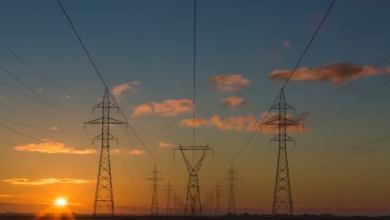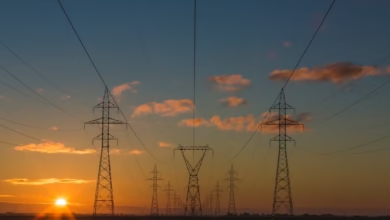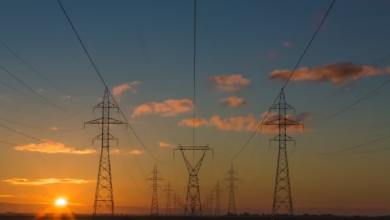Navigating the Global Energy Trade: The Future of Energy Exports and Imports in a Changing Landscape

The global trade of energy resources has become a critical component in shaping energy markets and addressing pressing challenges such as climate change and energy security. As countries navigate the complexities of energy exports and imports, they must balance the demand for reliable and affordable energy with the need for sustainable practices. This intricate landscape is influenced by a variety of factors, including the shift from fossil fuels to renewable energy sources like solar power, wind energy, and hydropower. Innovations in energy storage and transportation are paving the way for a successful energy transition, enabling the integration of green energy into existing infrastructures. As nations invest in energy efficiency, carbon capture technologies, and smart grids, the dynamics of global energy trade are evolving rapidly. This article explores the nuances of energy imports and exports, delves into the competition between renewable and fossil fuels, and highlights the innovations driving the future of energy R&D. Join us on this journey to understand how global energy trends are reshaping our world and influencing energy policy for generations to come.
- 1. The Dynamics of Global Energy Trade: Navigating Energy Exports and Imports
- 2. Renewable Energy vs. Fossil Fuels: Shaping the Future of Energy Markets
- 3. Innovations in Energy Storage and Transportation: Key to a Sustainable Energy Transition
1. The Dynamics of Global Energy Trade: Navigating Energy Exports and Imports
The global energy trade is a complex and ever-evolving landscape influenced by various factors, including geopolitical dynamics, technological advancements, and climate change. Navigating energy exports and imports requires an understanding of the diverse energy markets and the types of resources being exchanged. As nations strive for energy security and lower carbon emissions, the shift toward renewable energy sources such as solar power, wind energy, and hydropower is becoming increasingly significant.
In recent years, energy exports have seen a notable increase, particularly in regions rich in fossil fuels, such as the Middle East and North America. These countries leverage their abundant resources to engage in energy exports, contributing significantly to global energy economics. Simultaneously, the rise of renewable energy has led to a burgeoning market for energy imports, as countries lacking natural resources seek to diversify their energy portfolios. This trend is further bolstered by advancements in energy storage technologies, which enhance the reliability of renewable sources and facilitate energy transportation across borders.
The energy transition is also a key factor shaping global energy trends. Nations are investing in energy innovations and R&D to develop alternative energy sources, including hydrogen energy and bioenergy, which are seen as vital components in reducing reliance on fossil fuels. Energy efficiency measures are being prioritized to optimize consumption and minimize waste, promoting a more sustainable approach to energy use.
Additionally, energy policy plays a crucial role in determining the flow of energy exports and imports. Governments are increasingly implementing regulations that encourage the development of smart grids and carbon capture technologies, creating a favorable environment for the growth of green energy sectors. As electric vehicles gain popularity, the demand for renewable energy sources is expected to rise, further influencing energy trade dynamics.
As countries navigate the complexities of energy imports and exports, they must also consider the implications of climate change and the need for sustainable practices. The integration of distributed energy systems, along with offshore energy projects, presents new opportunities for countries to enhance their energy security while meeting international climate agreements.
In summary, the dynamics of global energy trade are shaped by a multitude of factors, including the transition to renewable energy, investment in energy innovations, and evolving energy policies. Understanding these elements is essential for navigating the future of energy exports and imports in an increasingly interconnected world.
2. Renewable Energy vs. Fossil Fuels: Shaping the Future of Energy Markets
The energy landscape is rapidly evolving, shaped by the ongoing competition between renewable energy sources and fossil fuels. As the world grapples with climate change and seeks energy security, the transition towards greener alternatives is becoming paramount. Renewable energy, which includes solar power, wind energy, hydropower, bioenergy, and hydrogen energy, is increasingly viewed as the cornerstone of future energy markets. These resources not only offer the potential for reduced greenhouse gas emissions but also enhance energy efficiency and contribute to energy security through diversification of energy supply.
Fossil fuels, while historically dominant in global energy trade, face mounting scrutiny due to their environmental impact. The extraction and consumption of coal, oil, and natural gas release significant amounts of carbon dioxide, exacerbating climate change. Consequently, energy policies worldwide are shifting focus toward decarbonization, promoting investments in renewable energy technologies and innovations. For instance, advancements in energy storage and smart grids are critical for integrating intermittent renewable sources into the energy mix, ensuring a reliable and resilient energy system.
Nuclear energy also plays a role in shaping the future of energy markets, serving as a low-carbon alternative to fossil fuels. However, concerns about safety and waste management continue to challenge its acceptance. The energy transition requires not only a move towards renewables but also the development of carbon capture technologies to mitigate emissions from existing fossil fuel operations.
Moreover, energy transportation and distribution systems must adapt to accommodate the rise of distributed energy resources. Electric vehicles, powered by renewable energy, represent a significant shift in energy consumption patterns, demanding a reevaluation of energy infrastructure. The global energy trends indicate a growing interest in offshore energy projects, which harness wind and wave energy, further bolstering the potential for energy exports from regions rich in these resources.
In conclusion, the competition between renewable energy and fossil fuels will largely determine the trajectory of energy economics and investment in the coming decades. As countries implement energy policies aimed at fostering a sustainable energy transition, the emphasis on green energy solutions will shape the future of energy markets, driving innovation and collaboration across the globe.
3. Innovations in Energy Storage and Transportation: Key to a Sustainable Energy Transition
The global energy landscape is undergoing a transformative shift, with innovations in energy storage and transportation playing a crucial role in facilitating a sustainable energy transition. As nations strive to reduce dependency on fossil fuels and enhance energy efficiency, the development of advanced storage solutions becomes vital. Energy storage technologies, such as batteries and pumped hydro storage, enable the efficient utilization of renewable energy sources like solar power and wind energy. By storing excess energy generated during peak production times, these innovations help balance supply and demand, ensuring a stable energy supply and enhancing energy security.
Furthermore, the integration of smart grids is revolutionizing energy transportation. Smart grids facilitate real-time monitoring and management of energy flows, optimizing the distribution of energy resources across various energy markets. This technology not only improves the reliability of electricity delivery but also supports the integration of distributed energy resources, including residential solar panels and electric vehicles. By enhancing energy transportation systems, smart grids contribute to a more resilient and responsive energy infrastructure.
In addition to these advancements, emerging technologies such as hydrogen energy and carbon capture are pivotal to the energy transition. Hydrogen, particularly green hydrogen produced from renewable sources, presents a promising alternative to fossil fuels, offering a clean energy carrier for various sectors, including transportation and industry. Meanwhile, carbon capture technologies aim to mitigate the environmental impact of existing fossil fuel operations, aligning with global energy trends towards lower carbon emissions.
Investments in energy R&D are essential for accelerating these innovations. Governments and private sectors are increasingly recognizing the significance of energy investments in fostering sustainable practices, driving economic growth, and combatting climate change. As energy policies evolve to support these advancements, the global energy economy is poised for a substantial transformation, paving the way for a future that prioritizes sustainability, energy efficiency, and reduced carbon footprints. The synergy between innovations in energy storage and transportation will ultimately be key to achieving a successful energy transition and securing a sustainable energy future.
In conclusion, the global trade of energy resources is at a pivotal juncture, influenced by the dynamics of energy exports and imports, the ongoing transition from fossil fuels to renewable energy sources, and advancements in energy storage and transportation technologies. As nations navigate the complexities of energy markets, the shift towards green energy is becoming increasingly crucial for ensuring energy security and addressing climate change.
The interplay between traditional fossil fuels and emerging renewable energy sources like solar power, wind energy, and hydropower will continue to shape energy policies and investment strategies. Innovations in energy efficiency, carbon capture, and smart grids are essential for achieving a sustainable energy transition, enhancing energy economics, and promoting distributed energy solutions.
As we look ahead, the importance of energy R&D and investments in offshore energy, thermal energy, hydrogen energy, and bioenergy cannot be overstated. These advancements are not only vital for meeting global energy demands but also for fostering a more resilient and efficient energy landscape. By embracing these global energy trends and prioritizing sustainable practices, countries can position themselves at the forefront of the energy revolution, ensuring a robust and environmentally responsible energy future for generations to come.
References:
[Add your references here as per APA style]




